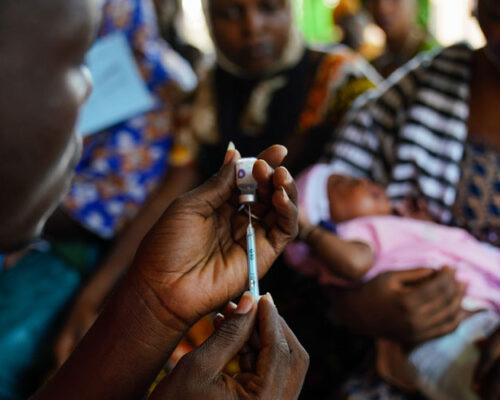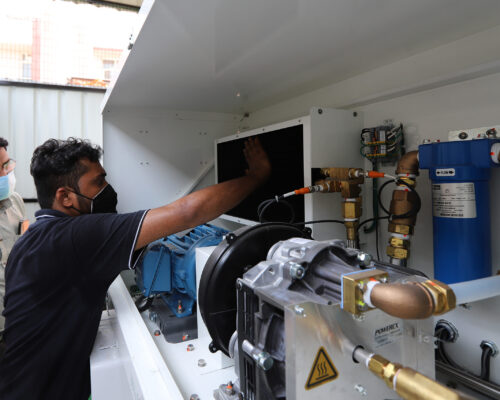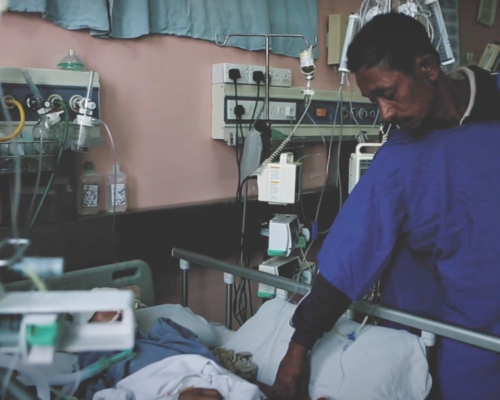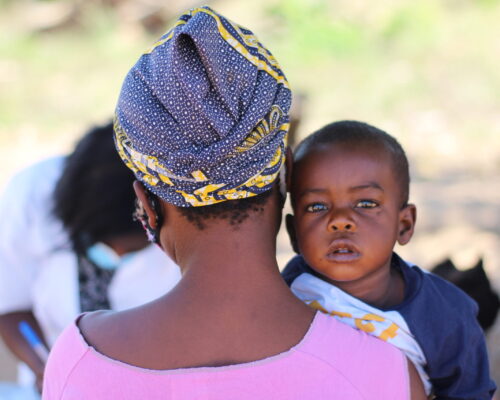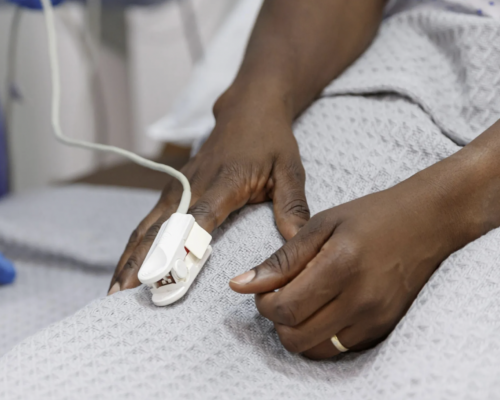
Lancet Global Health Oxygen Commission
Medical oxygen is an essential medicine with no substitute for the treatment of at least 20 Global Burden of Disease conditions, including HIV/AIDS, TB, pneumonia, malaria, maternal and neonatal disorders, tracheal, bronchus, and lung cancers, anemia, sickle cell disease, heart disease, stroke, COPD, asthma, transport injuries, poisonings, foreign body injuries, self-harm, and interpersonal violence. Together, these conditions caused a massive 25 million deaths in 2019, almost 50% of all human deaths.
Medical oxygen is particularly lifesaving for newborns and children. A recent review found that deaths among hospitalized children fell by 25% when pulse oximetry and oxygen was provided, and that oxygen is as cost-effective as childhood vaccination. But oxygen is often unavailable in health facilities, especially those located in low- and middle-income countries (LMICs). And where it is available, it is often unaffordable leaving the most vulnerable patients without access to a lifesaving medicine.
COVID-19 exposed a tragic gap
Lack of medical oxygen was a defining inequity of the COVID-19 pandemic, with LMICs bearing the brunt of oxygen shortages and related deaths. The pandemic exposed not only a tragic gap in inadequate supplies of medical oxygen and respiratory therapies, but also the trained workforce needed to install, operate, and maintain the lifesaving equipment. The gap had always been there – contributing to a massive burden of death that was largely hidden. When COVID-19 unleashed a new wave of patients needing oxygen, hospitals were unable to meet the demand and the world watched as patients died waiting for oxygen on gurneys in the parking lots of hospitals, in the backseats of cars, and at home waiting for loved ones to return with filled cylinders.
A study of COVID-19 deaths in 64 intensive care units across 10 African countries showed that one in two patients died without receiving medical oxygen, and a study from Peru, which recorded the highest COVID-19 death rate in the world, found that oxygen saturation below 90% on admission was a strong predictor of mortality. The authors concluded that in settings with limited resources, efforts to reduce COVID-19 deaths should focus on early identification of hypoxemia and timely access to oxygen.
Oxygen gaps remain in many countries
Despite the additional oxygen supplies many countries received during the pandemic, including $US 1 billion from the ACT-Accelerator Oxygen Emergency Taskforce, access gaps remain. Many governments still do not know how much oxygen their health systems need to meet the needs of patients during routine times, or how much surge capacity will be needed when the next respiratory pandemic strikes. Likewise, global health partners are in the dark about how much, and what kind, of oxygen support different countries need to strengthen their health systems most cost-effectively.
The Lancet Global Health Commission on Medical Oxygen Security is a major effort to change this. Announced in September 2022, the Commission will shed light onto the number of patients needing medical oxygen each year in each country and the cost of meeting that need, how to define and measure oxygen access, which oxygen solutions work best in different settings, and how to generate the financing and political will to achieve transformational change. It will address all levels of care from hospital to home, all age groups from neonates to the elderly, all health conditions where oxygen is a recommended treatment, and all the ways in which access to oxygen can contribute to health system strengthening and pandemic preparedness.
Promising new developments
Governments and global health and development agencies urgently need this information as they pivot from pandemic response to preparing for the next crisis and return to the job of achieving the Sustainable Development Goals. The new Global Oxygen Alliance (GO2AL), co-chaired by The Global Fund and Unitaid, and the World Health Organization’s Increasing Access to Medical Oxygen Resolution, endorsed by all 194 Member States are both welcome additions to the global health architecture and vital to the successful implementation of the Commission’s recommendations.
The Lancet Global Health Commission on Medical Oxygen Security was announced in September 2022 and is co-chaired by Makerere University in Uganda, icddr,b in Bangladesh, the University of Melbourne/Murdoch Children’s Research Institute (MCRI) in Australia, and Karolinska Institutet in Sweden. The Every Breath Counts Coalition is a member of the Executive Committee and provides support to all parties.
Twenty Commissioners oversee the work of the Commission – academic experts representing all regions – and 40 Advisors provide guidance to the Commissioners. To ensure the widest possible access to the work of the Commission, a global network of more than 100 organizations – the Oxygen Access Collaborators – meet regularly. All organizations are welcome to join this group. Special testimonials are being recorded from patients and caregivers and consultations have been conducted with industry.
The Commission is on track to publish its report with associated commentaries in early 2025 and will undertake a series of regional launches to maximize uptake of its recommendations.
To get involved in the Lancet Global Health Commission on Medical Oxygen Security, contact Leith Greenslade at leith@justactions.org.
Are you a patient who has used medical oxygen in the last five years in hospital or at home; or a caregiver who has looked after someone who has? The Lancet Global Health Oxygen Commission wants to hear your story. You can share details anonymously if preferred. Reach out to Leith Greenslade leith@justactions.org.
RESOURCES
Announcements
- UN General Assembly Lancet Global Health Oxygen Commission Statement, 15 September 2023 (French) (Spanish)
- Milestone Adoption of Medical Oxygen Resolution & Launch of new Global Oxygen Alliance at the World Health Assembly, 26 May 2023
- WHO Oxygen Resolution a Major Milestone for Access to Medical Oxygen, Every Breath Counts, 3 February 2023
- Welcoming the Lancet Global Health Commission on Medical Oxygen Security, Every Breath Counts, 25 September 2022
- Announcing the Lancet Global Health Commission on Medical Oxygen Security, Lancet Global Health, 23 September 2022
Report
- Overview document
- Overview deck
- Working Group affiliations
- Commission logo
- What is a Lancet Global Health Commission?
Governance
- Overview
- Commissioners
- Commissioner Roles and Responsibilities
- Advisors
- Executive Committee
- Oxygen Access Collaborators
If you would like to join the monthly meetings of the Oxygen Access Collaborators, please email Leith Greenslade: leith@justactions.org
Latest from the Commissioners, Advisors, and Executive Committee
- Neelima Navuluri, Filling the Oxygen Gap. Patients in low-income countries often aren’t getting adequate medical oxygen, a new DGHI-led study reveals, February 2024, based on Prevalence and phenotypic trajectories of hypoxaemia among hospitalised adults in Kenya: a single-centre, prospective cohort study, BMJ Respiratory Medicine, September 2023
- Lisa Smith et al, Variability of oxygen requirements in critically ill COVID-19 patients, Journal of Global Health, February 2024
- Shams el Arifeen et al, Implementation of bubble continuous positive airway pressure for children with severe pneumonia and hypoxemia in intensive care unit of Dhaka Hospital, Bangladesh, Pediatric Pulmonology, January 2024
- Ramanan Laxminarayan with Varun Manhas, National Medical Oxygen Grid, October 2022, Overview Deck, and Letter of Support from Madhya Pradesh Government, January 2024
- Hamish Graham, Freddy Kitutu, Freddie Ssengooba, Felix Lam, and colleagues, Improving Effective Coverage of Medical Oxygen Services For Neonates and Children in Health Facilities in Uganda: A Before-After Interventional Study, The Lancet Preprint, December 2023
- Tisugane Mvalo, Eric McCollum, and colleagues, A hidden pandemic: the danger of donated respiratory devices to children in LMICs, Lancet Global Health, December 2023
- Heather Zar and Eric McCollum, Pulse oximetry to detect paediatric hypoxaemia-the fifth vital sign, Lancet Global Health, November 2023
- Ramanan Laxminarayan and Leith Greenslade, Solving for Oxygen, Think Global Health, September 2023
- Robert Matiru with Zachary Katz, Opinion: Adopting WHO’s oxygen resolution is imperative to save lives, Devex, March 2023
You can also share your oxygen-related research here
The Promise of Reduced Dose Pneumococcal Vaccination for Children
Pneumonia is the leading infectious cause of death in children under five and, as a result, the pneumococcal conjugate vaccine, or PCV, is one of the most lifesaving vaccines. However, just six in every ten children are protected with PCV well below the global target...
17 March, 2024A2O2 Resource Library
The A2O2 Resource Library is a platform for all things oxygen - covering every aspect of the oxygen ecosystem from planning to equipment to patient care.
10 May, 2023You paid WHAT?
For the more than 400 million adults and children who get sick with pneumonia each year, the costs of treatment can be catastrophic - as individuals and families are forced to pay out-of-pocket for healthcare. Every Breath Counts is launching a new campaign to document these crippling costs.
09 December, 2022Antimicrobial resistance and pneumonia
How do we reduce inappropriate use of antibiotics for the treatment of pneumonia and close any remaining access gaps for pneumonia patients, especially children, who are missing out?
18 November, 20222nd Global Forum on Childhood Pneumonia
The 2nd Global Forum on Childhood Pneumonia built on the momentum for action generated by the first Forum in 2020, enabling countries to rapidly reduce child pneumonia deaths and accelerate achievement of the child survival SDG.
13 November, 2022Pulse oximeters that work for everyone
There is growing evidence that pulse oximeters do not work effectively on darker skin tones. This is unacceptable. Every Breath Counts has launched a petition to change this.
10 October, 2022


